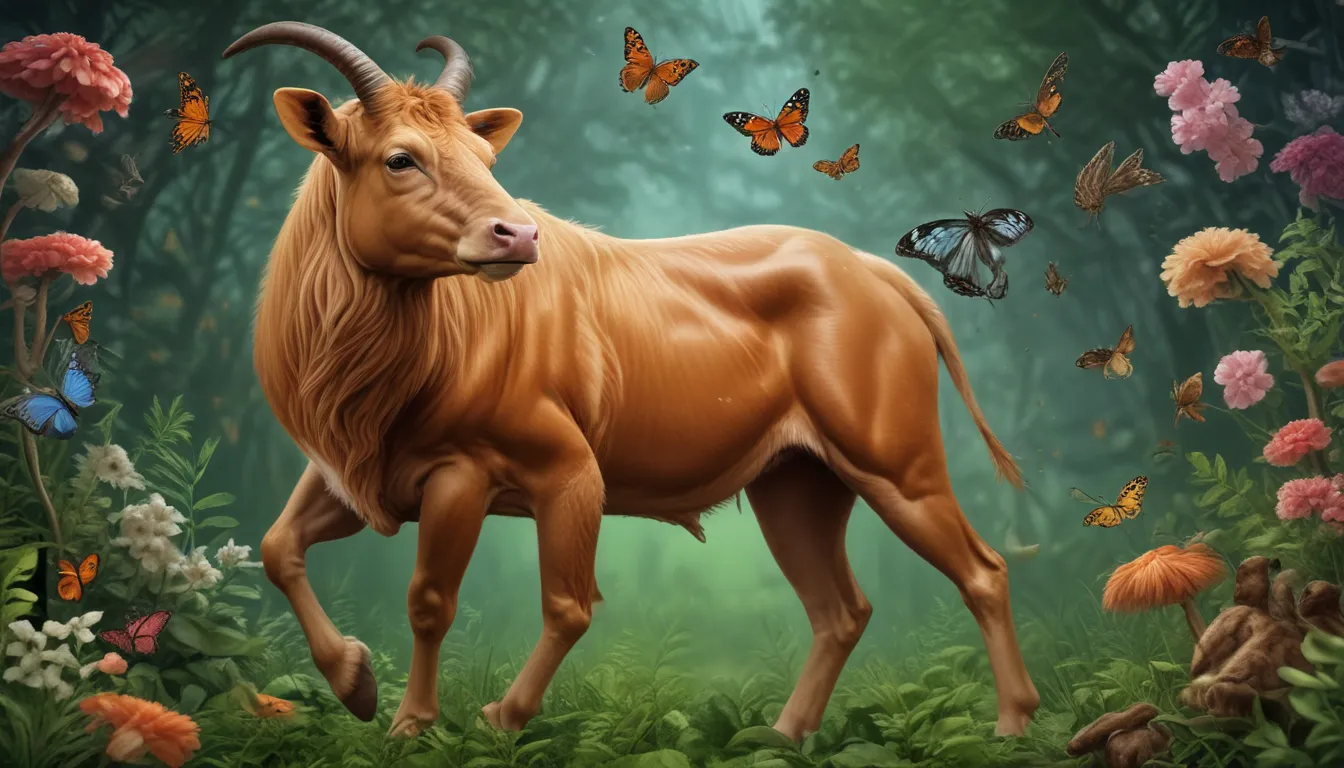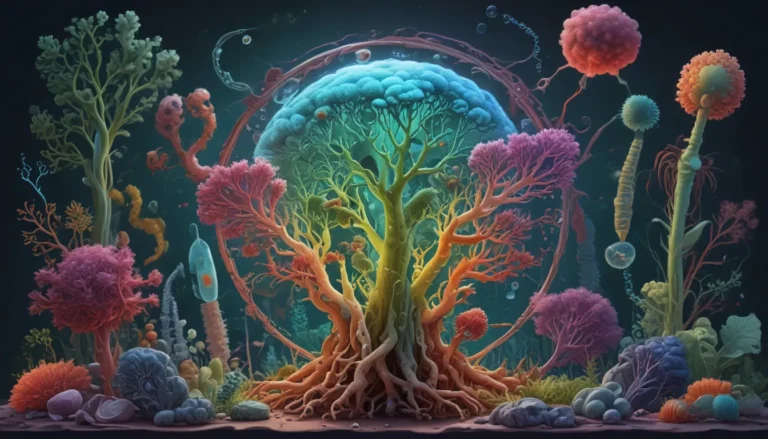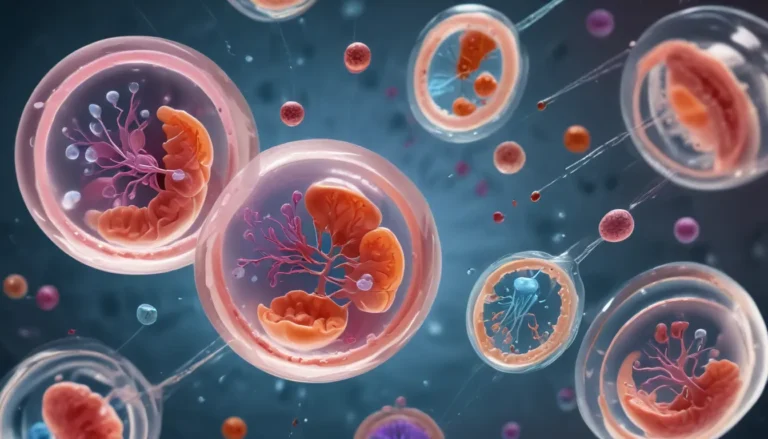A Note About Images: The images used in our articles are for illustration purposes only and may not exactly match the content. They are meant to engage readers, but the text should be relied upon for accurate information.
Animal physiology is a captivating field that unravels the mysteries of the inner workings of the animal body. From the microscopic cellular processes to the intricate systems that keep animals thriving, the study of animal physiology offers profound insights into the astounding adaptation and diversity found in the animal kingdom. In this exploration, we will uncover eight astonishing facts about animal physiology that will leave you in awe of the incredible feats and capabilities exhibited by various animal species. From regenerative abilities to super senses, get ready to delve into the secrets of animal physiology and discover the remarkable complexity that lies beneath the surface of the animal world.
Key Takeaways:
- Animals like axolotls and starfish possess incredible regenerative abilities, fascinating scientists for potential medical applications.
- Sharks utilize electroreception to detect electrical fields, aiding them in hunting and navigation.
The Incredible Regenerative Abilities of Axolotls
Axolotls are extraordinary creatures renowned for their exceptional regenerative powers. Unlike most animals that form scars when injured, axolotls can completely regenerate lost body parts, including limbs, spinal cords, and even parts of their heart and brain. This unique ability has captured the attention of scientists, sparking research into potential applications for human medicine.
The Electric Sense of Sharks
Sharks boast an exceptional sense known as electroreception, enabling them to detect electrical fields generated by other animals. Specialized organs called ampullae of Lorenzini, located in the shark’s snout, are sensitive to even the faintest electrical signals. This sense aids sharks in navigation, finding prey, and detecting injured animals, making them formidable hunters in the ocean.
The Camouflage Abilities of Octopuses
Octopuses showcase mastery in camouflage, capable of changing both the color and texture of their skin to blend seamlessly into their environment. Using specialized cells called chromatophores, they can match the color and pattern of their surroundings within seconds. This remarkable skill allows octopuses to evade predators and surprise their prey, showcasing their prowess as efficient hunters in the ocean.
The Super Strength of Ants
Despite their small size, ants exhibit incredible strength, able to carry objects many times their own body weight. This impressive feat is attributed to the structural design of their bodies, including their muscles and exoskeleton. With powerful jaws for gripping and transporting objects, ants showcase remarkable strength and teamwork in building complex colonies and foraging for food.
The Echolocation Abilities of Bats
Bats possess the remarkable ability of echolocation, enabling them to navigate and hunt in darkness. By emitting high-frequency sounds and interpreting the echoes that bounce back, bats accurately discern the distance, size, and location of objects in their surroundings. This unique adaptation grants bats a distinct advantage in locating prey, navigating obstacles, and flying with exceptional precision in the night sky.
The Flying Skills of Hummingbirds
Hummingbirds are renowned for their extraordinary flying abilities, being the only birds capable of hovering in mid-air, flying backward, and even upside down. By flapping their wings at a high frequency, hummingbirds generate enough lift to maneuver with great agility. These tiny birds dart quickly from flower to flower, feeding on nectar with their long, slender beaks.
The Magnetic Navigation of Sea Turtles
Sea turtles possess a remarkable ability to navigate vast distances using Earth’s magnetic fields. Scientists suggest that sea turtles have tiny magnetite crystals in their brains, allowing them to perceive and orient themselves based on the magnetic field. This internal compass aids sea turtles in finding their way back to nesting grounds even after migrating long distances across the ocean.
The Regenerative Powers of Starfish
Starfish exhibit astonishing regenerative abilities, capable of regenerating an entire body from a single arm. When a starfish loses an arm, it can grow a new one, complete with all internal organs. This regenerative power enables starfish to repair and replace damaged or lost body parts, giving them a remarkable ability to survive and thrive in their marine habitats.
Conclusion
Animal physiology offers profound insights into the intricate workings of animals, enriching our understanding of the natural world. Whether it’s the marvels of sensory adaptation or the astonishing adaptability of deep-sea creatures, animal physiology unveils fascinating physiological adaptations that have evolved over millions of years.
As we embark on this journey into the world of animal physiology, we unveil the incredible ways in which animals have adapted to diverse environments, enabling them to flourish and survive. From heat-regulating mechanisms in desert dwellers to efficient oxygen-carrying abilities in high-altitude creatures, animal physiology illuminates the marvelous complexity and diversity of life on Earth.
The world of animal physiology reminds us that nature is a masterful engineer, crafting ingenious solutions for survival. So, take a moment to appreciate the astonishing physiological feats of animals you encounter, and marvel at the wonders of the animal kingdom.
FAQs
Q: What is animal physiology?
Animal physiology is the study of how the bodies of animals function and adapt to their environments.
Q: Why is animal physiology important?
Understanding animal physiology helps us comprehend how different species have evolved and adapted to survive in various ecosystems. It also provides insights into the functioning of our own bodies.
Q: What are some examples of physiological adaptations in animals?
Examples of physiological adaptations include the ability of some animals to hibernate, the ability of desert animals to conserve water, and the way certain deep-sea creatures withstand extreme pressure.
Q: How does animal physiology contribute to medical research?
Animal physiology provides valuable insights into the functioning of different organ systems, aiding in the development of medical treatments and therapies for human health conditions.
Q: Is animal physiology the same for all animals?
Animal physiology varies among species, as different animals have adapted to their unique environments and lifestyles.
Q: Can animal physiology change over time?
Yes, animal physiology can change through the process of evolution. Species can develop new physiological traits to better suit their changing environments.
Unveil the wonders of animal physiology and witness the remarkable adaptations that enable animals to thrive in diverse environments. Nature’s engineering marvels are on full display in the animal kingdom, showcasing the resilience and ingenuity of life on Earth. Explore the fascinating realm of animal hearts and delve deeper into the incredible physiological feats that continue to inspire and astonish us. Enjoy the journey into the captivating world of animal physiology, where every discovery brings us closer to unlocking the mysteries of the natural world.





